Author: toppyhem

HVAC (Heating, Ventilation, and Air Conditioning) systems are integral to maintaining comfort in homes, offices, and other buildings. If you’re currently in HVAC technician training or considering this career path, it’s necessary to understand the various systems you’ll encounter in the field.
Remember, each type of HVAC system offers unique opportunities for technicians. Becoming proficient in these systems ensures you can handle various situations and meet your future clients’ needs. This blog post highlights five common types of HVAC systems you should be familiar with as a budding technician.
1. Be Familiar With Split Systems During and After Your HVAC Technician Training
Split systems are the most prevalent type of HVAC system in residential settings. Just as we highlighted in our HVAC technician courses at NATS, they are called “split” because they consist of components distributed both inside and outside the home.
The typical setup includes an outdoor unit containing the compressor and condenser coils and an indoor unit that houses the evaporator coils and air handler. This system is often paired with a furnace or air handler that circulates air throughout the building. As an HVAC technician, you must master both components’ installation, maintenance, and repair.
2. Hybrid Systems
Hybrid systems function similarly to split systems with a twist — they incorporate a heat pump that can provide heating and cooling. This system uses a furnace and a heat pump, which helps save on energy costs.
The heat pump operates on electricity and can heat and cool your home. Still, during colder weather, the system switches to furnace mode, usually powered by gas, making it more energy-efficient. Training in hybrid systems will involve understanding how to switch between the two energy sources seamlessly and efficiently.
3. Ductless Mini-Split Systems
Ductless mini-splits are becoming increasingly popular due to their efficiency and the ability to control temperatures in individual rooms. These systems do not require ductwork; they have an outdoor compressor, condenser, and one or more indoor air-handling units.
These units are connected by a conduit, which houses the power cable, refrigerant tubing, and a condensate drain. Installing and maintaining ductless systems during your HVAC technician training is crucial as more homes and businesses seek flexible and economical heating and cooling solutions.

4. Packaged Heating & Air Conditioning System
Packaged systems are typically found in buildings requiring more space for a split system’s separate components. In a packaged system, the compressor, condenser, and evaporator are all housed in a single unit, which is usually located on the roof or a concrete slab near the building’s foundation.
These units often include electric heating coils or a natural gas furnace, eliminating the need for a separate indoor furnace. Training will involve understanding how to safely install and maintain these larger units, often in challenging environments.

5. Geothermal Heat Pump Systems
Geothermal heat pump systems are considered one of the most cost-effective and sustainable options. These systems utilize the earth’s stable temperature to provide heating, cooling, and even hot water.
The system consists of an indoor handling unit and a series of pipes buried in the ground, known as a ground loop. Geothermal systems are highly efficient because they transfer heat between your home and the earth with a heat pump.
As these systems gain popularity for their energy efficiency and low operational costs, expertise in installing and maintaining them can be particularly valuable.
Interested in an HVAC technician diploma?
Contact NATS for more information.
Welcome to North American Trade Schools, where we are committed to helping you excel in your studies and prepare for a successful trade career. Trade school can be an exciting and rewarding journey, but it requires dedication and hard work. To help you make the most of your time with us, here are 10 tips for trade school success.
[Infographic] Excel In Your Studies: 10 Tips For Trade School Success
1. Set Clear Goals
- Define what you want to achieve at trade school.
- Whether it’s mastering a specific skill or earning a certification.
- Having clear goals will keep you motivated and focused.
2. Manage Your Time Wisely
- Trade school can be intensive, so it’s important to manage your time.
- Create a study schedule and stick to it,
- Balance your coursework with other commitments.
3. Stay Organized
- Keep track of assignments, deadlines, and important dates.
- Use tools like planners or digital calendars to stay organized.
4. Actively Participate in Class
- Engage with your instructors and classmates.
- Ask questions,
- Participate in discussions
- Take advantage of opportunities
- Learn from others in your field.
5. Seek Help When Needed
- Ask for help if you’re struggling.
- Your instructors, advisors, and classmates are here to support you.
- Take advantage of tutoring services or study groups.
6. Stay Positive and Persistent
- Trade school can be challenging.
- Maintain a positive attitude.
- Stay persistent.
7. Network and Build Relationships
- Network with professionals in your field.
- Build relationships with your classmates.
- These connections are valuable as you start your career.
8. Take Care of Yourself
- Prioritize your health and well-being.
- Get plenty of rest
- Eat well.
- Make time for activities that help you relax and recharge.
9. Stay Updated on Industry Trends
- Stay informed about the latest trends and technologies.
- Attend workshops, conferences, and seminars to expand your knowledge.
10. Stay Committed to Your Goals
- Stay committed to your goals and don’t give up.
- With hard work, dedication, and the right mindset, you can achieve success in trade school and beyond.
At North American Trade Schools, we are here to support you every step of the way on your journey to trade school success. By following these 10 tips, you can make the most of your time with us and prepare for a rewarding trades career. We look forward to helping you achieve your goals and succeed in your studies.
Sources:
https://www.coursera.org/articles/how-to-be-successful-in-college
https://opportunity.org/learn/lists/10-habits-of-successful-students
4 Important Skills To Have If You’re Considering Global Supply Chain And Logistics Training
April 29, 2024A global supply chain manager is responsible for the worldwide product flow management of an organization. During global supply chain and logistics training, you will learn a wide variety of skills to prepare you for the role.
During your logistics management diploma, the skills you will learn include data analytics, contracting, operations management, quality management, customs and global trade compliance, warehousing, communications, and supply management.
You also have the opportunity to sit the Canadian International Freight Forwarders Association certification exam and the Lean Six Sigma Yellow Belt certification exam. Your training will thoroughly prepare you to succeed in a global supply chain and logistics role, however, to do this, you also need good foundational skills.
Discover the essential skills needed for global supply chain and logistics training. Check out this infographic!
[Infographic] 4 Important Skills To Have If You’re Considering Global Supply Chain And Logistics Training
1. High Attention to Detail
Being detail-oriented is important:
- Every aspect of the logistic process is crucial and plays an important role.
- You’ll need to focus on the details to ensure success throughout the supply chain.
- High attention to detail often results in consistently improved systems and processes.
- Being attentive helps avoid mistakes.
Indicators you have high attention to detail include:
- Double-checking your work.
- Being a person who manages their time well.
Strong attention to detail enables thorough evaluation of operations, minimizing errors in the workplace
2. Strong Interpersonal Skills
Managing and communicating effectively is important:
- In a management role, your ability to communicate effectively is important.
- Effective communication and robust interpersonal skills are essential for interacting and negotiating with business partners.
- Be customer-oriented to ensure client satisfaction and continued business.
- Strong listening and effective communication skills, will help you thrive in a global supply chain management role.
Indicators that you have strong interpersonal skills include:
- You can collaborate with others whenever needed.
- You can communicate your ideas in an easy-to-understand manner.
You need to be able to communicate effectively with team members and customers to succeed in the role.
3. Adaptable in all Situations
Situations change and being adaptable is important:
- Successfully managing and solving logistics challenges is key to excelling in your role.
- You must think quickly, analyze situations, and devise solutions under pressure.
- Adaptability in learning new systems and processes is crucial as they evolve.
Indicators that you have effective adaptation skills include:
- You work well under pressure.
- You enjoy problem solving.
- You commit fully when mastering new skills.
In changing situations, swift and clear adaptation and decision-making are essential.
4. Know Technology
Being technologically savvy is important:
- Supply chains are complicated and require software and programs to remain up-to-date.
- The software and programs streamline tasks and information.
- Knowledge of computer systems is crucial.
- In larger companies, technological processes become more complex due to the increased volume of information to manage and update.
Indicators showing you have strong technical skills include:
- You know how to navigate a computer system well, including Microsoft Suite.
- You can efficiently utilize programs, quickly mastering their features to accomplish tasks.
Understanding and working with technology is fundamental to a global supply chain and logistics role.
Sources:
https://www.indeed.com/career-advice/career-development/logistics-career-skills
https://www.logisticsbureau.com/7-key-supply-chain-leaders-skills-and-why-you-need-them/
https://www.techtarget.com/searcherp/feature/5-skills-supply-chain-professionals-need
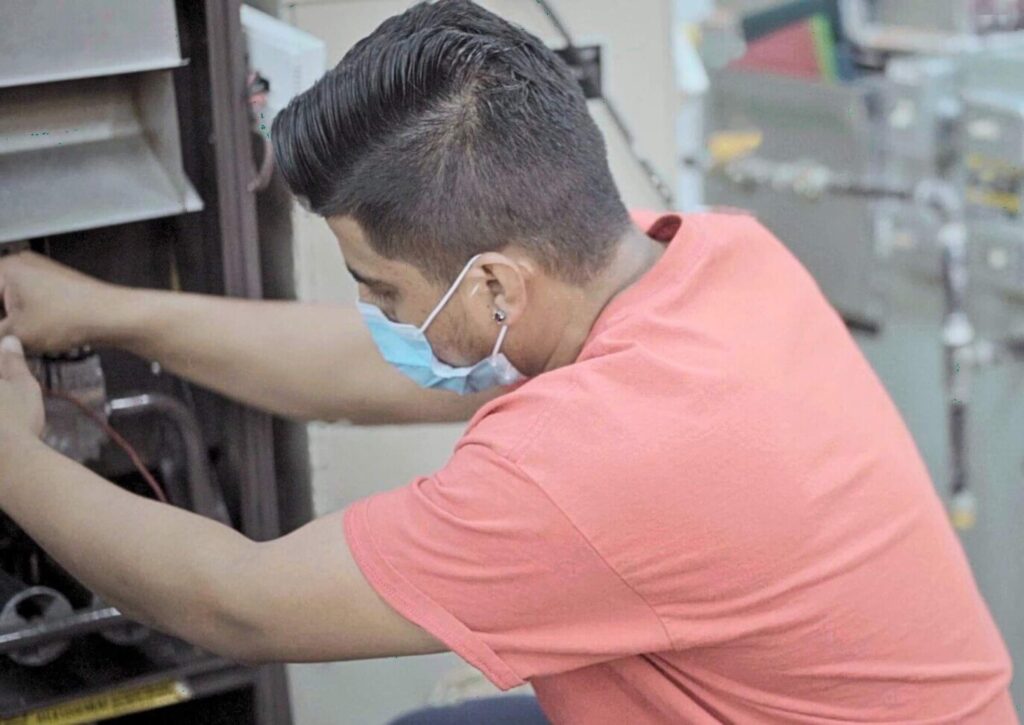
As technology advances and HVAC systems become more sophisticated, the demand for skilled troubleshooters in the industry will continue to grow. Therefore, ongoing training and practice in troubleshooting are essential for any HVAC technician aiming for success in this field.
The journey toward mastery in this field continues after completing HVAC technician training. One of the most critical skills that separates novice technicians from seasoned experts is the ability to troubleshoot HVAC systems effectively. It enhances job performance and customer satisfaction and ensures system efficiency, safety, and cost-effectiveness. This blog post explains why troubleshooting is indispensable in the HVAC industry.
The Necessity of Troubleshooting Skills
Troubleshooting is an essential part of HVAC work. It involves diagnosing and resolving problems in heating, ventilation, and air conditioning systems. This skill is crucial due to the complexity of HVAC systems, which can result in various issues. A technician’s ability to quickly and accurately identify and solve these problems can significantly impact system performance, customer satisfaction, and business reputation.
Enhancing Job Performance and Customer Satisfaction
Technicians skilled in troubleshooting after HVAC technician training can swiftly identify and resolve issues, which is crucial in minimizing client disruptions and inconvenience. This prompt response not only mitigates the downtime experienced by clients but also plays a significant role in boosting their satisfaction. Satisfied clients are more likely to share positive feedback and recommend the technician’s services, enhancing the technician’s reputation for reliability and expertise.
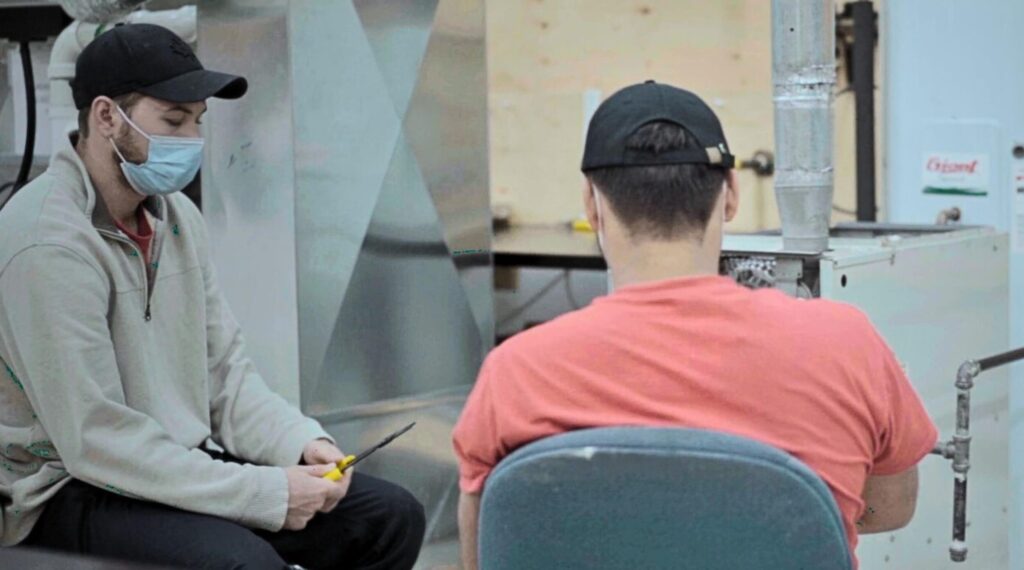
In an industry where reputation and word-of-mouth recommendations are vital, excelling in troubleshooting can be a key differentiator. It opens doors to new business opportunities and fosters career growth. By consistently displaying solid problem-solving abilities, technicians can establish themselves as trusted experts in their field, attracting a more extensive clientele base and potentially higher-profile projects. This virtuous cycle of proficiency, satisfaction, and growth underscores the importance of troubleshooting skills in the professional development of technicians.
HVAC Technician Training Emphasizes the Importance of System Efficiency and Safety
Proper troubleshooting is essential for ensuring that HVAC systems function efficiently. This meticulous process goes beyond mere repairs, playing a crucial role in conserving energy and significantly extending the lifespan of the equipment. Efficient troubleshooting is not just a matter of operational performance; it’s a critical safety measure. HVAC systems comprise complex electrical components, potentially hazardous refrigerants, and other elements that could pose significant risks if mishandled. It is essential to know the sequence of operation for the appliance you are diagnosing.
As our HVAC technician courses emphasize, accurate diagnosis and timely repair are imperative to minimize these risks. Doing this ensures the safety of the technicians working on these systems and the clients using them. This approach promotes a sustainable, energy-efficient, and safe environment, highlighting the importance of expertise and attention to detail in HVAC maintenance and repair.
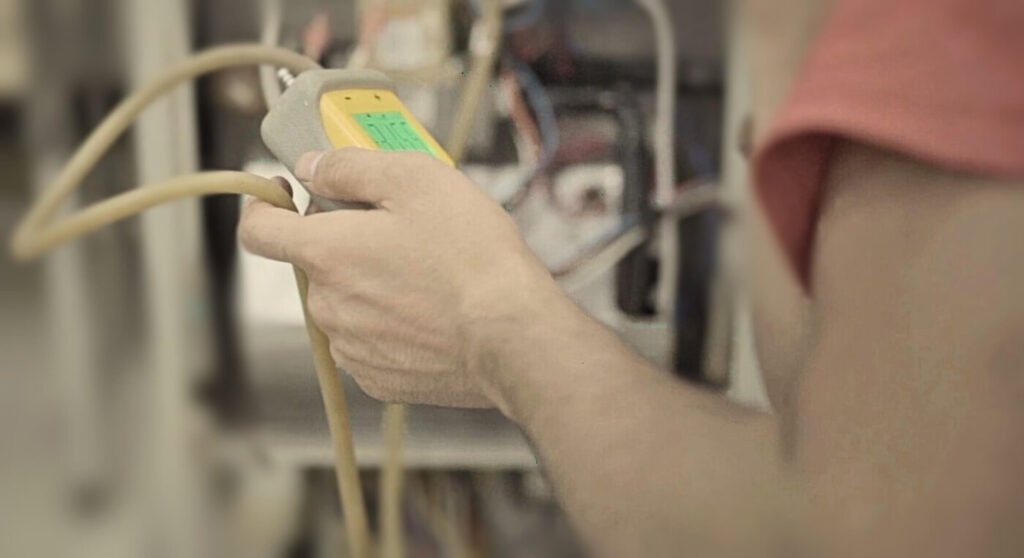
HVAC Trouble Shooting Ensures Cost-Effectiveness
The economic impact of adept troubleshooting in technical fields, particularly for HVAC technicians, is profound. When technicians are keen to diagnose and resolve issues accurately, it substantially reduces unnecessary replacements and repair expenses. This efficiency in troubleshooting is not only financially advantageous for the service provider but also for the customer.
Avoiding superfluous replacements means lower client costs, while service providers benefit from reduced expenditures on parts and labor. This mutually beneficial scenario highlights the significance of proficient troubleshooting skills. It contributes to a sustainable business model where cost-effectiveness is paramount, leading to greater customer loyalty and a more robust market reputation for the service provider. Effective troubleshooting is a cornerstone for financial prudence in the maintenance and repair sector, creating a win-win situation for both the service provider and their clientele.
Do you want to earn an HVAC technician diploma?
Contact NATS for more information.
Navigating the Post-pandemic Landscape after Logistics Training
April 15, 2024
The logistics industry has undergone a seismic shift after the global pandemic. The pandemic has significantly affected supply chains, transportation, and logistics worldwide. Trade restrictions, port closures, and workforce reductions have led to disruptions, obliging logistics professionals to adapt swiftly. With a surge in e-commerce, evolving customer expectations, and ongoing supply chain disruptions, the landscape for logistics training graduates has become more dynamic than ever.
Fresh out of logistics training, you’re equipped with the knowledge and skills to navigate this new reality. However, translating textbook concepts into practical solutions in a post-pandemic world requires a strategic approach. This blog post highlights some key areas to focus on as you embark on your logistics career:
Embrace Flexibility and Adaptability and Deepen Your Understanding of E-Commerce
The pandemic highlighted the importance of agility in the face of unforeseen circumstances. Gone are the days of rigid, linear supply chains. Today’s logistics professionals must be adaptable and capable of quickly pivoting strategies and workflows to address disruptions.
This means staying abreast of industry trends, emerging technologies, and geopolitical issues that could impact global trade. Familiarize yourself with alternative solutions, such as diversified sourcing strategies and multimodal transportation options.
As most logistics courses highlight, E-commerce has become a dominant force in the retail landscape. As a logistics professional, understanding the intricacies of e-commerce fulfillment is crucial.
This includes knowledge of warehousing and inventory management specific to e-commerce needs, such as streamlined picking and packing processes, efficient last-mile delivery solutions, and robust reverse logistics systems for returns and exchanges.
Familiarize yourself with e-commerce platforms and marketplaces and the fulfillment models they utilize. Understanding customer expectations for fast, reliable deliveries is paramount.
Leverage Technology and Prioritize Data Security
Technology is transforming the logistics industry at an unprecedented pace. Various tools can enhance efficiency, productivity, and data-driven decision-making, from warehouse automation to blockchain-powered supply chain tracking.

Embrace opportunities to learn about and utilize logistics management software, warehouse management systems, and transportation management systems. Familiarity with data analytics tools will position you well as companies increasingly rely on data to optimize operations and predict demand.
Cybersecurity threats are growing in the logistics industry, where valuable data is constantly moving. As a logistics professional, you play a vital role in protecting sensitive information such as customer data, trade secrets, and shipment details.
Develop and implement best practices for data security, including vital password hygiene, awareness of phishing scams, and adherence to data privacy regulations.
Develop Strong Communication Skills and Build Your Network after Logistics Training
Effective communication is vital across industries, but it is especially crucial in logistics, where efficient collaboration between departments and external partners is key.
Work on refining your written and verbal communication skills during and after your logistics training. Practice active listening and clear articulation during meetings and negotiations. Effective communication fosters trust and transparency, leading to better problem-solving and smoother workflows.

Building strong professional relationships is vital to career growth in the logistics industry. Attend industry events, connect with logistics professionals online, and don’t hesitate to engage with industry experts.
Mentorship from experienced professionals can provide valuable insights and guidance as you navigate your career path. Additionally, a strong network opens doors to new opportunities, allowing you to stay current on industry trends and informed about job openings.
Are you looking for world-class career training?
Contact NATS for more information.
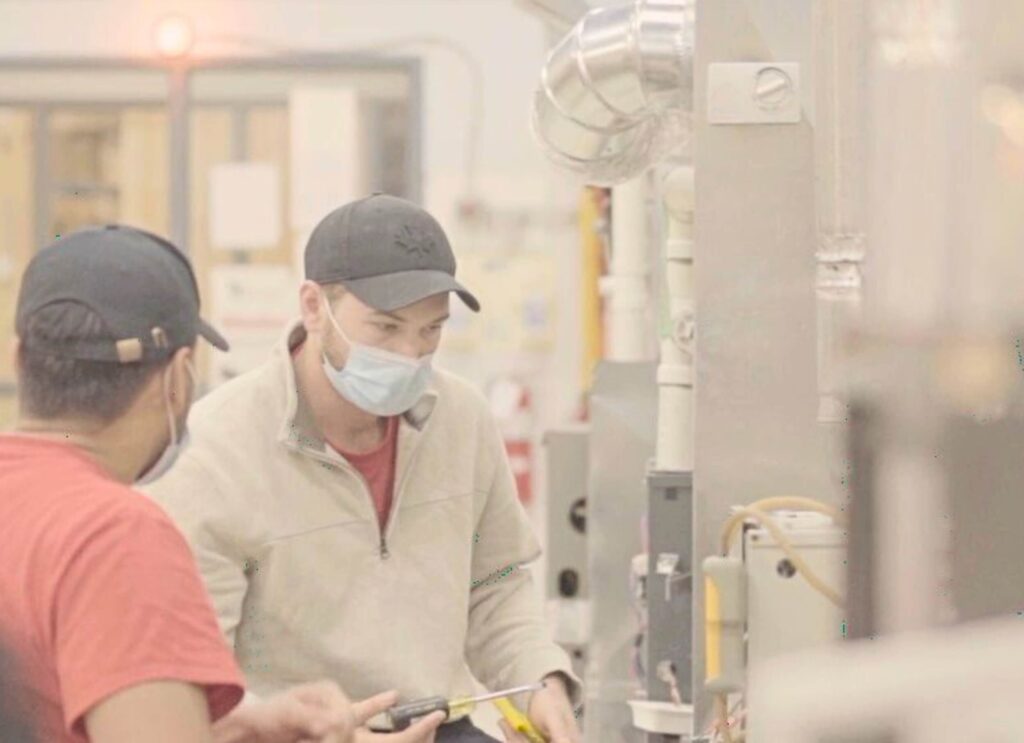
Just as the saying goes, to know where something is going, you have to know where it’s been. For students just starting their HVAC technician training, exploring and understanding the history of HVAC systems is crucial. It provides valuable context for their studies and sets the pace for future endeavours.
HVAC technology has seen substantial advancements, transforming how we manage indoor heating, cooling, and ventilation. These innovations improve our living and working conditions and prepare us to meet the demands of future climate challenges. Because of this, it is important to look back at where it all began. Let’s explore a brief history of HVAC.
HVAC Technician Training Explores Its Ancient Origins
Our forebears were already developing basic HVAC systems before the first HVAC technician training program was even created. The ancient Romans represent a significant example of early recorded instances of designing heating and cooling systems.
In a system that has now been termed and acknowledged as a “hypocaust,” the Romans used to circulate hot air underneath their floors using a specific technique. The air was channeled through raised pillars, warming the room and delivering essential indoor comfort for its occupants.
The Romans were not alone, the Egyptians also used an interesting technique to cool indoor spaces. The use of wet reed mats to provide indoor cooling, which was then considered a unique evaporating cooling technique, harnessed the natural cooling effect of water evaporation.
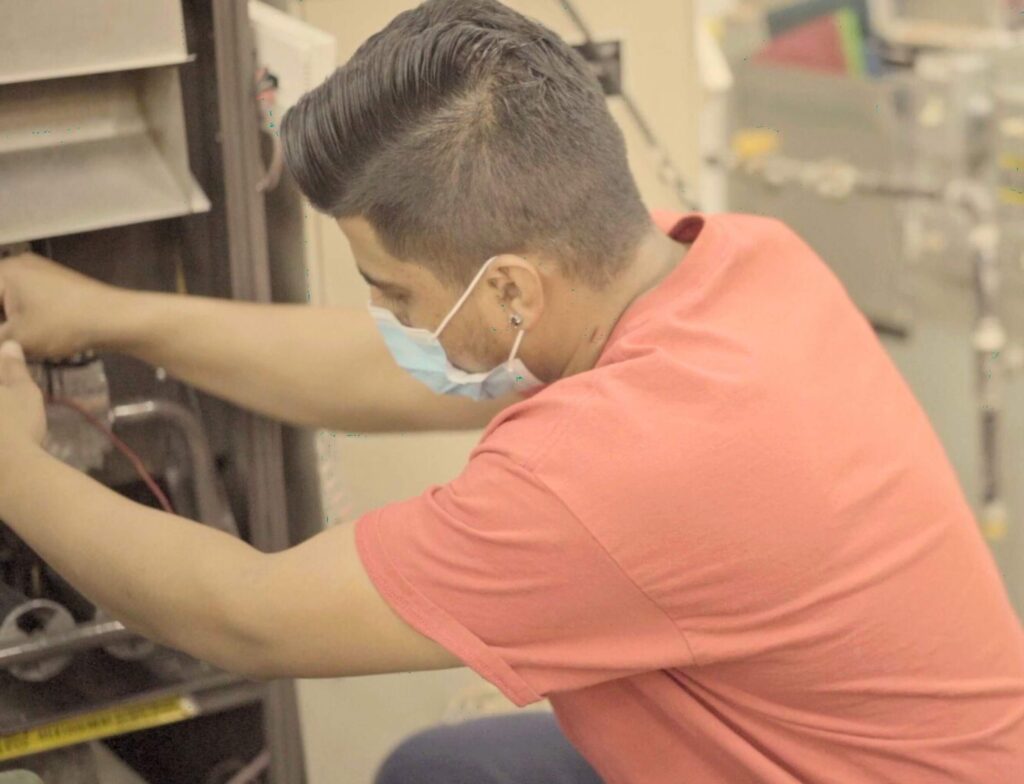
How the Industrial Revolution Influenced Early HVAC Development
The advent of the Industrial Revolution in the 19th century sparked many significant advancements in heating and ventilation technology, especially steam heating. As industrial innovation and technology continued to pick up steam, so did steam heating systems.
These steam heating systems depended on boilers to heat water and channel steam through pipes leading to radiators. These radiators then dispersed the heat across strategically placed openings to warm the rooms. Concurrently, mechanical ventilation systems became prevalent in Western homes, significantly advancing residential climate control.
When Willis Carrier invented the first mechanical air conditioning unit in 1902, a new dawn in indoor climate control/conditioning beckoned. The entry of refrigerants, such as freon, in the 1930s would later boost the operational quality and efficiency of air conditioning systems, changing the game.
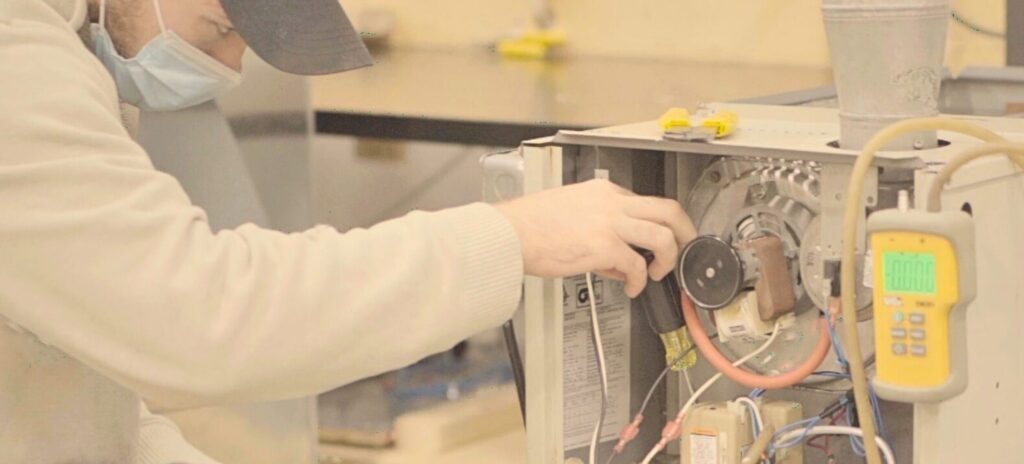
The Effect of Contemporary Technological Advancements
Over the past two centuries, HVAC technology has advanced quickly due to progress in engineering, materials science, and environmental consciousness. Innovations began with the introduction of freon-like refrigerants and were followed by advancements in digital controls, the integration of renewable energy sources, and improvements in energy efficiency. Such advancements include inventions like programmable thermostats for energy efficiency and the integration of smart HVAC controls for remote monitoring and automation.
The HVAC industry’s focus has shifted entirely towards energy efficiency and sustainability. Smart HVAC controls and eco-friendly refrigerants are becoming more common, with innovative solutions continually emerging.
Students in our HVAC college learn all about these innovative solutions, with their coursework now focusing on things like renewable energy systems and energy-efficient HVAC technologies.
Students from our training program applaud the quality of education and support they get. Jason Boyer is one of those students and a now-practicing technician. In his words, “I choose NATS because it is a hands-on school; they teach you what you need to know and you apply the knowledge in the lab, and there’s a lot of skilled technicians with the experience and know-how there.”
This emphasis on cutting-edge technology and sustainable practices ensures that our graduates, like Jason, are prepared to excel in their careers and lead the industry toward a greener future. At NATS, we pride ourselves on providing education that is both relevant and transformative, equipping students with the skills and knowledge to thrive in a rapidly evolving HVAC landscape.
Do you want to become an HVAC technician?
Contact NATS today to learn more.
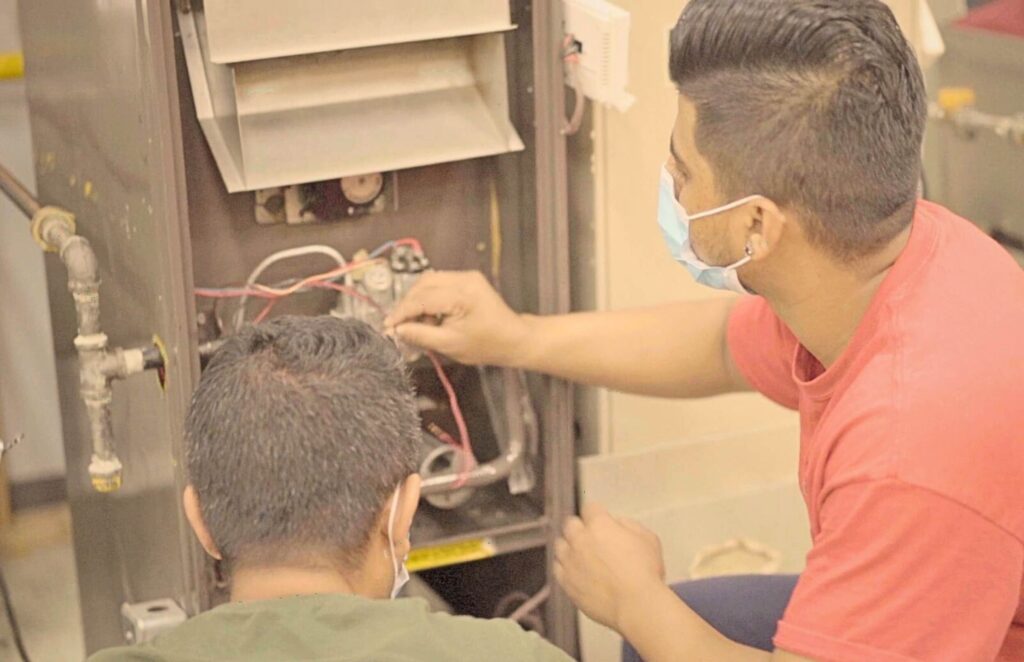
Traditionally, Heating, Ventilation, and Air Conditioning (HVAC) professionals are known for playing an integral role in maintaining the comfort and safety of indoor environments. Yet, the HVAC field is vast, with many career paths beyond traditional settings. These days, being an HVAC technician means not being limited to indoor or residential spaces alone.
HVAC training graduates possess a skill set in high demand, thanks to the essential nature of climate control in residential, commercial, and industrial spaces. Here, we explore three interesting non-traditional work settings where HVAC training graduates can apply their skills and knowledge, each offering unique challenges and opportunities for career growth.
1. Make an Impact on Environmental Conservation in Renewable Energy Sectors
The push towards sustainability and renewable energy has opened new avenues for HVAC professionals. In this sector, HVAC technician training graduates can work on integrating heating and cooling systems with solar panels, wind turbines, and other renewable energy sources.
This environment is about installing or repairing traditional systems and innovating and working on the cutting edge of eco-friendly technologies. Professionals in this field have the opportunity to contribute to the development of green buildings and energy-efficient homes, making a tangible impact on environmental conservation and energy independence.
2. Industrial and Manufacturing Plants Provide a Stimulating Work Environment
HVAC specialists encounter complex and wide-ranging difficulties in industrial settings that are absent in residential or commercial contexts. To maintain the integrity of the items being created and the safety of the workers, manufacturing plants and other industrial facilities heavily rely on sophisticated HVAC systems to regulate environmental conditions. These systems must be designed with large-scale area ventilation and temperature control within strict parameters. In these settings, regulations such as this are central to the specialized manufacturing processes within the facility.
To succeed in this field, budding HVAC technicians must thoroughly understand industrial operations. Armed with insights from their completed HVAC technician courses, they must understand how differing environmental conditions might affect various manufacturing phases and how crucial it is to set up HVAC solutions to satisfy these requirements.
Working in such environments can demonstrate one’s capacity for large-scale system design and management and advance technical competency and problem-solving skills. In addition to technical expertise, the position requires the ability to think creatively and to guarantee that HVAC systems seamlessly integrate with the particular needs of every industrial process.
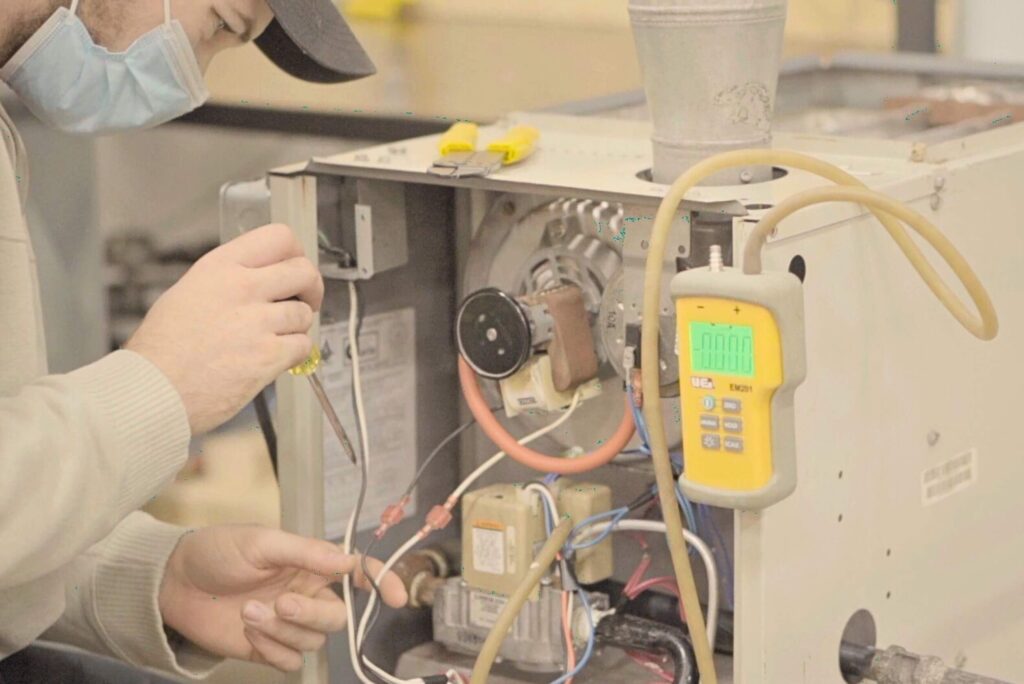
3. Explore Healthcare Facilities Opportunities After HVAC Technician Training
Healthcare facilities like hospitals, clinics, and research laboratories demand exacting climate control to uphold sterile conditions and guarantee patient comfort. This presents a distinct set of challenges for HVAC professionals. Professionals who work in these environments are tasked with installing and maintaining systems that regulate temperature, humidity, and air purity. Given the high stakes of healthcare settings, HVAC technicians and engineers in this field must navigate and comply with rigorous regulations and standards to ensure their systems support the facility’s vital operations.
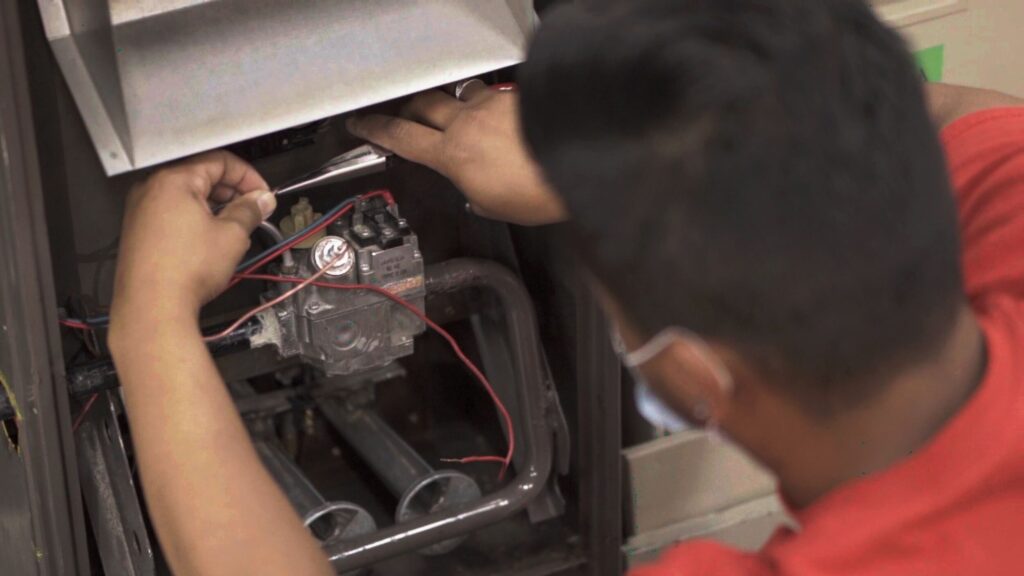
This setting offers HVAC graduates technical hurdles and the fulfilling opportunity to play a key role in patient care and safety. Their work directly impacts the healing environment, contributing to the well-being of patients and the efficiency of healthcare processes. This sector uniquely blends engineering and technology challenges with the human aspect of healthcare, making it a profoundly rewarding field for HVAC professionals dedicated to making a difference.
Are you interested in an HVAC technician career?
Contact NATS for more information.
Tips For Operations Planning After Supply Chain And Logistics Training
April 10, 2024
The ultimate goal of operations planning is to properly and consistently align and optimize the flow of supply chain resources to satisfy customer demands efficiently at all times. Because proper operations planning is key to the success of every logistics business, it is essential to have the right approach.
If you’ve just finished your Supply Chain and Logistics training and fancy a career in operations planning, you’ll find the information here very valuable. Here are some important tips for operations planning to keep in mind on your journey.
Map Out Your Supply Chain Process Flows
The process flows around your supply chain and provides a trail of activities that allow you to track your operations planning. To understand these process flows and their implications on your supply chain operations, map them out extensively and observe every detail. Document the sequence of events from the time of order and procurement through the storage, distribution, and delivery processes leading to the final consumer.
Also, highlight all the inputs, outputs, logistics, operations, and key players actively participating in each stage and analyze their interaction. When you do this properly and effectively, you will have figured out any gaps, inefficiencies, and problem points in your supply chain.

Logistics Management Training Teaches Comprehensive Supply Chain Infrastructure Analysis
When you conduct a thorough supply chain infrastructure analysis, you can find out what works well, optimize those processes, and identify areas needing improvements or upgrades. This analysis should cover the condition of your warehouses, transport fleet, staffing capacity, equipment, and other technology systems that your supply chain operations rely on.
This allows for easy discovery of any bottlenecks, outdated processes, and capacity constraints that impact your operation. After identifying your operational challenges, you can now make plans and deploy the right personnel to make all the necessary improvements. This analysis process is emphasized in most logistics management training programs as it helps pave the way for more informed decision-making by logistics managers.
Examine Supply Chain Key Performance Indicators (KPIs)
Your KPIs are key to evaluating your supply chain’s performance level in line with set parameters and standards. When you assess your supply chain’s KPIs and compare them to industry standards, you can find out what competitive gaps need closing and what standards need reinforcing. Your KPIs typically include total supply chain costs, inventory turnover rates, and lead times.
They influence many activities accounted for in your operations planning and define your supply chain. And because they constantly change as operations play out, you’ll need to put them within range of a regular monitoring system. This way, you’ll always know what direction to take while planning your operations.

Identify Risks and Create Actionable Mitigation Plans
Risk analysis in operations planning is a feature of many logistics management courses due to its importance. While carrying out operations planning, it is important to do proper risk analysis around your supply chain. Your risk analysis should cover all activities in your operations, from supply to distribution and delivery.
After examining the various risk factors associated with your supply chain operations, you can make appropriate mitigation plans. If you find that there’s potential for a particular process to no longer be applicable, reliable, or practical, you can create a contingency plan to cover it.
Are you interested in a logistics management diploma?
Contact NATS today to learn how you can get started.

Heating, ventilation, and air conditioning (HVAC) systems are essential for maintaining comfortable indoor environments, but they can pose potential hazards if not handled properly. Proper training is crucial for ensuring safety when working with HVAC systems.
However, even after completing HVAC training, professionals can make safety mistakes that jeopardize their well-being and the well-being of those around them. In this blog post, we will discuss three common safety mistakes to avoid after HVAC training.
1. Neglecting Personal Protective Equipment (PPE)
One of the most fundamental safety mistakes HVAC professionals make is neglecting to wear appropriate personal protective equipment. PPE is essential to safeguard against potential hazards, such as electrical shock, refrigerant exposure, or cuts from sharp materials. After completing HVAC training, it’s crucial to remember that PPE is not optional but required for every job.
As our HVAC technician courses specify, the specific PPE needed can vary depending on the task. Still, it often includes safety glasses, gloves, steel-toed boots, and insulated electrical gloves for electrical work. Ignoring these safety measures can result in injuries that could have been easily prevented.

Additionally, HVAC technicians must be vigilant about the maintenance of their PPE. Regularly inspect and replace any damaged or worn items to ensure they remain effective. A small investment in PPE can prevent severe injuries and keep HVAC professionals safe on the job.
2. Skipping Safety Checks and Procedures
HVAC systems are complex, and the installation, maintenance, and repair processes involve various safety checks and procedures that should be followed rigorously. After completing HVAC technician training, technicians may become complacent or skip certain steps, thinking they can rely on their experience.
However, neglecting safety checks and procedures can lead to catastrophic consequences. For instance, failing to secure and test gas lines properly can result in gas leaks and potential explosions. Skipping the inspection of electrical connections can lead to electrocution or fires. Ignoring safety checks is not only dangerous but can also be costly in terms of property damage and potential lawsuits.
To avoid this safety mistake, HVAC professionals should always follow safety protocols and checklists provided by their employers or industry standards. These procedures are in place for a reason and are designed to protect technicians, clients, and property.
3. HVAC Technician Training Promotes Ensuring Adequate Equipment Inventory
As unlikely as this might seem, HVAC technicians can fail to maintain an adequate inventory of their tools and equipment. A well-prepared HVAC technician should have a comprehensive set of tools and materials to perform their job efficiently and safely. This aspect must be revised to avoid unnecessary delays, substandard work, and potentially hazardous situations.

Some common inventory-related mistakes to avoid include:
- Lack of essential tools: Forgetting or not carrying crucial tools leads to improvisation, which can be unsafe. Always ensure you have the necessary tools, such as wrenches, screwdrivers, multimeters, and pipe cutters.
- Insufficient safety equipment: Many HVAC tasks involve working with electricity, refrigerants, or elevated positions. Neglecting safety equipment like gloves, safety glasses, fall protection gear, and arc flash suits can result in severe accidents.
- Disorganized work vehicle: Maintaining a well-organized work vehicle is vital for efficiency and safety. A cluttered and disorganized van can lead to accidents when tools or equipment are not stored securely.
Are you interested in our HVAC technician diploma?
Contact NATS for more information.

If you’re thinking about pursuing a career in the HVAC (Heating, Ventilation, and Air Conditioning) industry, you’re on track to enter a thriving field that offers a blend of hands-on work and technical problem-solving. But where do you start? How do you gain the necessary experience and exposure to decide if this is the right field for you? One often overlooked but highly beneficial position to consider is that of an HVAC Maintenance Assistant or HVAC Helper.
In this blog post, we’ll dive deep into what an HVAC Maintenance Assistant does, the benefits of starting in this position, and why it could be the ideal first step for aspiring HVAC professionals after your HVAC training.
What Is an HVAC Maintenance Assistant?
An HVAC Maintenance Assistant, often referred to as an HVAC Helper, is an entry-level position in the HVAC industry. As the name suggests, the primary role of this position is to assist HVAC technicians in their daily tasks. This can involve anything from handling tools, preparing work areas, and performing basic maintenance, to assisting with installations and repairs.
HVAC helpers focus on heating, cooling, and ventilation systems, assisting with tasks like inspecting equipment, installing humidifiers, preparing tools, cleaning air ducts, and maintaining company vehicles. They also handle the general upkeep of property interiors and exteriors. They ensure preventative maintenance is followed and assist with basic repairs across HVAC/R, plumbing, and electrical systems. Their duties also cover equipment repair, basic carpentry, furniture moving, and area maintenance like cleaning and lawn care. With the rise of clean energy systems, both roles need familiarity with electricity-based HVAC/R mechanics, such as heat pumps.

Why Consider Starting As An HVAC Maintenance Assistant?
Before committing to formal HVAC technician training or certifications, becoming an HVAC Helper offers a taste of the industry, granting invaluable first-hand experience of daily operations. This can be instrumental in gauging if the profession aligns with your aspirations. (this is generally not allowed. Most situations in hvac require a helper/assistant to already have the G3 certification)
Another notable advantage of beginning as an assistant is the “learn while you earn” model, a contrast to professions demanding early educational investments. This position also brings the opportunity for mentorship; by working alongside seasoned HVAC technicians, you gain access to a reservoir of knowledge and insights not always encapsulated in official training. Moreover, starting as an HVAC Helper is merely a foundation; with accrued experience and further training, there’s potential to ascend to more advanced roles, ranging from technician to management positions.

How to Become An HVAC Maintenance Assistant
HVAC helpers and maintenance assistants typically possess a high school diploma or GED, although formal education might not be a requirement for some. Previous experience is not usually mandatory, as workers often undergo a few weeks of on-the-job training to develop proficiency in their respective tasks.
(again this can be a bit misleading as a certificate is usually required to work on hvac systems and appliances.)
However, having vocational training in a relevant trade, understanding HVAC operations (particularly in energy-efficient technologies like heat pumps), or holding one to two years experience can give job seekers an edge, making them more appealing to employers compared to candidates without such qualifications.
Those aspiring to advance from these entry-level roles to become technicians or installers may consider applying for apprenticeship programs, pursuing vocational training, obtaining an HVAC technician diploma, or enrolling in courses provided by HVAC/R industry bodies, manufacturers, or distributors, with a focus on equipment and components used in clean energy systems.
Are you looking for a world-class HVAC technician college?
Contact NATS for more information.







